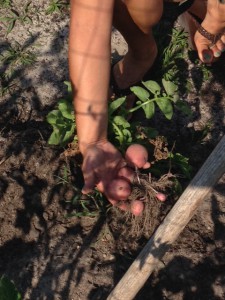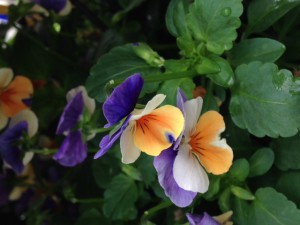It is freezing cold this week and hard to believe that we are already talking about “What to Plant” and “What to Do” to get started early. In North Florida there are cool-season annuals that can be planted now. The list includes pansies, violas, petunias, and snapdragons. As we are coming to the end of January it is time to plant crinum, agapanthus and gloriosa lily bulbs. Make sure to mulch these areas after planting to protect them from the cold temperatures. This is also the month to plant camellias, which these come in many colors and forms that your local nurseries will carry this time of year. If you haven’t planted all your cool season crops there is still time to do that now such as broccoli, kale, carrots, and lettuce. Irish potatoes can be planted now as well.
Now you might be asking “What can I do?”. January is a great time to prune non-spring flowering shrubs and trees to improve their form. This is a good time to plant deciduous fruit trees, this will give their roots time to develop before the warmer spring temperatures. Since existing trees are dormant, it is a good time to prune and fertilize them. When the temperatures are near freezing many of the tender plants will need to be covered to minimize damage. It’s a good time to plant a tree. Hurricane-resistant trees include live oaks, bald cypress, cabbage palms, and southern magnolias. It’s time to remove those dead spent seed pods on your crape myrtles and removing any crossing branches and twiggy growth will improve the appearance and the form of the plant.

Potatoes planted in mid-February were ready to harvest in mid-May in Bay County. Photo: Vicki Evans, UF/IFAS Master Gardener of the plant.
As we go into February it will soon be time to apply a preemergence weed killer to your lawns to prevent warm-season weeds. Temperatures must rise to 65°F for 4 to 5 consecutive days before you do a preemergence application and make sure you are not using a weed and feed fertilizer. Citrus and other fruit trees can be fertilized at this time. The amount and frequency will depend on the age and type of fruit tree you are growing. Avoid pruning Citrus until spring to avoid any injury since cold temperatures are still possible. It is time to prune those roses this month to remove damaged canes and improve the overall form. After the pruning is complete you can fertilize and apply a fresh layer of mulch. They should begin blooming within 8 to 9 weeks after being pruned.
Dianthus, pansies, violas, and dusty millers are annuals that can take a chill and should be planted in February. You can continue to plant crinum and agapanthus this month and add on amaryllis and rain lily bulbs as well. If it has been dry make sure to provide plenty of water for the bulbs to establish and continue to protect them from the cold by adding mulch. Trees and shrubs will begin to bloom this month including red maples and star magnolias. Continue planting potatoes throughout the month and towards the end of February warm-season crops like tomatoes and pepper can be planted but be prepared to protect them from any late frosts.
- Steps to Keeping a Healthy Lawn - March 30, 2023
- Companion Planting: What is it? - February 21, 2023
- Educational Opportunity: Fruit and Vegetable Meeting - December 22, 2022

